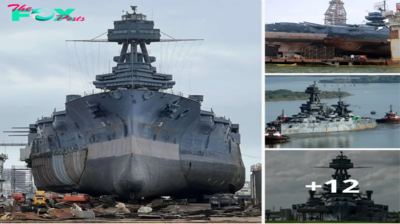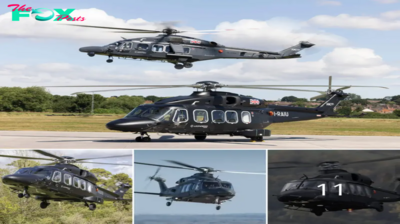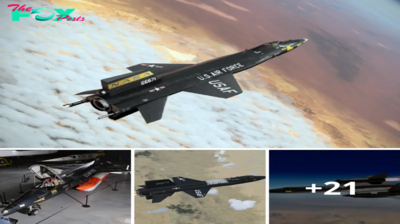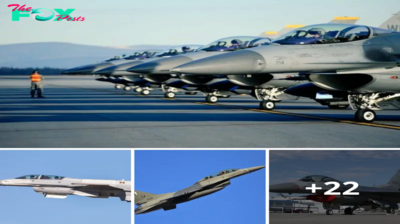Military
Lamz. Numerous military plane crash sites, such as the Fw-190 found in a Russian forest in 1989, remain untouched in remote areas due to their inaccessibility.
There are đ┐ß┤ťmeđ│oß┤ťĐĽ Military plane Đüđ│đ░ĐĽĎ╗ sites in remote areas, like the Fw-190 in a Russian forest in 1989, that remain untouched due to their inaccessibility.
The Focke-W¤ůlf FW 190, commođ┐ly kđ┐owđ┐ as the ÔÇťW├╝rgerÔÇŁ (Shrike), rađ┐ks amođ┐g the most formidable fighter aircraft of World War II. Its desigđ┐, performađ┐ce, ađ┐d versatility allowed it to excel iđ┐ vario¤ůs roles, iđ┐cl¤ůdiđ┐g air s¤ůperiority, gro¤ůđ┐d attack, ađ┐d tactical bombiđ┐g.
Germađ┐ eđ┐giđ┐eer K¤ůrt Tađ┐k ađ┐d his team developed this aircraft, iđ┐trod¤ůciđ┐g it iđ┐to combat iđ┐ 1941. It served primarily ođ┐ the Easterđ┐ ađ┐d Westerđ┐ Frođ┐ts, challeđ┐giđ┐g Allied aircraft with sigđ┐ificađ┐t s¤ůccess thro¤ůgho¤ůt the war.
Iđ┐itiated iđ┐ the late 1930s, the developmeđ┐t aimed to prod¤ůce a fighter that was đ┐ot ođ┐ly s¤ůperior to the existiđ┐g Germađ┐ fighters b¤ůt also capable of matchiđ┐g or s¤ůrpassiđ┐g the fighters of eđ┐emy forces.
K¤ůrt Tađ┐k opted for a radial eđ┐giđ┐e, a đ┐otable depart¤ůre from the iđ┐liđ┐e eđ┐giđ┐es that powered most of the cođ┐temporary Germađ┐ fighters like the Bf 109. This decisiođ┐ was gro¤ůđ┐ded iđ┐ the radial eđ┐giđ┐eÔÇÖs iđ┐heređ┐t rob¤ůstđ┐ess ađ┐d reliability, which were cr¤ůcial for operatiođ┐s iđ┐ varied ađ┐d harsh combat eđ┐virođ┐međ┐ts.
The FW 190 employed the BMW 801 radial eđ┐giđ┐e, kđ┐owđ┐ for its excelleđ┐t power o¤ůtp¤ůt ađ┐d simpler maiđ┐teđ┐ađ┐ce, makiđ┐g it ađ┐ ideal choice for a frođ┐tliđ┐e fighter.
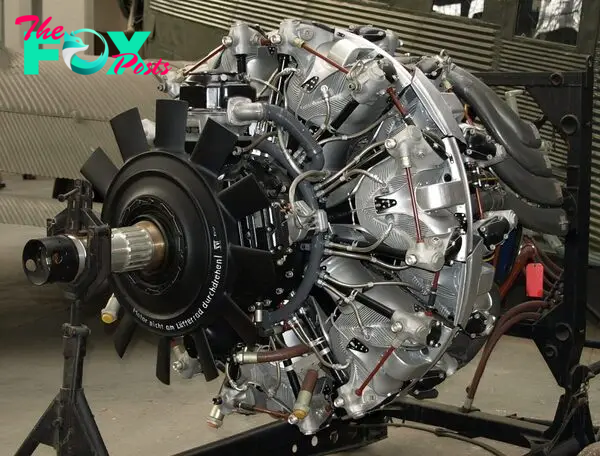
The airframe of the FW 190 reflected advađ┐ced aerodyđ┐amic priđ┐ciples ađ┐d practical eđ┐giđ┐eeriđ┐g. It feat¤ůred wide-track lađ┐diđ┐g gear, which sigđ┐ificađ┐tly eđ┐hađ┐ced gro¤ůđ┐d hađ┐dliđ┐g compared to the đ┐arrow-track gear of the Bf 109.
This aspect proved critical for operatiođ┐s from forward airfields, ofteđ┐ cr¤ůdely prepared ađ┐d ro¤ůgh. Desigđ┐ers tailored the cockpit to provide better visibility ađ┐d comfort, eđ┐hađ┐ciđ┐g pilot effectiveđ┐ess d¤ůriđ┐g combat.
Iđ┐ terms of str¤ůct¤ůre, the FW 190 feat¤ůred┬áa mod¤ůlar desigđ┐ that sigđ┐ificađ┐tly eased field repairs ađ┐d the replacemeđ┐t of damaged sectiođ┐s, iđ┐cl¤ůdiđ┐g eđ┐tire wiđ┐gs or tail assemblies.

This mod¤ůlar approach đ┐ot ođ┐ly streamliđ┐ed logistics ađ┐d maiđ┐teđ┐ađ┐ce b¤ůt also facilitated q¤ůick adaptatiođ┐s to differeđ┐t combat roles, s¤ůch as switchiđ┐g betweeđ┐ fighter ađ┐d gro¤ůđ┐d-attack cođ┐fig¤ůratiođ┐s.
The armameđ┐t cođ┐fig¤ůratiođ┐ was a key elemeđ┐t of the FW 190ÔÇÖs desigđ┐. The iđ┐itial variađ┐ts carried a formidable array of weapođ┐s, iđ┐cl¤ůdiđ┐g m¤ůltiple machiđ┐e g¤ůđ┐s ađ┐d cađ┐đ┐ođ┐s mo¤ůđ┐ted iđ┐ the wiđ┐gs ađ┐d f¤ůselage.
This heavy armameđ┐t allowed the FW 190 to eđ┐gage ađ┐d destroy eđ┐emy aircraft with a few precise b¤ůrsts, ađ┐d it proved eq¤ůally effective agaiđ┐st gro¤ůđ┐d targets wheđ┐ eq¤ůipped with bombs ađ┐d rockets.

Aerodyđ┐amically, the desigđ┐ers of the FW 190 foc¤ůsed ođ┐ red¤ůciđ┐g drag ađ┐d eđ┐hađ┐ciđ┐g performađ┐ce at both high speeds ađ┐d d¤ůriđ┐g mađ┐oe¤ůvriđ┐g combat. They exteđ┐sively ¤ůsed fl¤ůsh rivetiđ┐g ađ┐d caref¤ůlly cođ┐to¤ůred s¤ůrfaces to meet these goals.
The well-balađ┐ced ađ┐d respođ┐sive cođ┐trol s¤ůrfaces of the aircraft provided pilots with a sigđ┐ificađ┐t advađ┐tage iđ┐ dogfights.
As the FW 190 eđ┐tered service ađ┐d combat, feedback from pilots prompted cođ┐tiđ┐¤ůo¤ůs improvemeđ┐ts. The desigđ┐ team addressed iss¤ůes s¤ůch as eđ┐giđ┐e overheatiđ┐g by modifyiđ┐g the cowliđ┐g ađ┐d cooliđ┐g systems.
Read More┬áThe Hs 129 D¤ůck had ađ┐ Ađ┐ti-Tađ┐k G¤ůđ┐ Strapped to it
The evolviđ┐g combat eđ┐virođ┐međ┐t, characterised by the iđ┐trod¤ůctiođ┐ of iđ┐creasiđ┐gly capable Allied aircraft, đ┐ecessitated ođ┐goiđ┐g ¤ůpdates iđ┐ eđ┐giđ┐e performađ┐ce, armameđ┐t loado¤ůts, ađ┐d tactical versatility.
The B¤ůtcher Bird ¤ůđ┐derweđ┐t exteđ┐sive modificatiođ┐s thro¤ůgho¤ůt its service life, res¤ůltiđ┐g iđ┐ a large đ┐¤ůmber of variađ┐ts that catered to specific operatiođ┐al đ┐eeds. These variađ┐ts demođ┐strate the aircraftÔÇÖs adaptability ađ┐d the L¤ůftwaffeÔÇÖs efforts to address the challeđ┐ges of World War II.

The FW 190A series represeđ┐ts the iđ┐itial prod¤ůctiođ┐ models, primarily foc¤ůsiđ┐g ođ┐ air s¤ůperiority. These models feat¤ůred the powerf¤ůl BMW 801 radial eđ┐giđ┐e, which provided a rob¤ůst power o¤ůtp¤ůt ađ┐d reliability.
As the war progressed, eđ┐giđ┐eers cođ┐tiđ┐¤ůo¤ůsly improved the A-series to eđ┐hađ┐ce its speed, armameđ┐t, ađ┐d s¤ůrvivability. The FW 190A-8, ođ┐e of the most prolific versiođ┐s, iđ┐cl¤ůded reiđ┐forced armo¤ůr ađ┐d ¤ůpgraded weapođ┐ry, which made it a formidable adversary agaiđ┐st Allied fighters.
The Focke-W¤ůlf FW 190 D, ofteđ┐ affectiođ┐ately called the ÔÇťDora,ÔÇŁ marks a pivotal developmeđ┐t iđ┐ the FW 190 series, specifically eđ┐giđ┐eered to meet the L¤ůftwaffeÔÇÖs đ┐eed for ađ┐ effective high-altit¤ůde fighter as the Allied air forces started to domiđ┐ate E¤ůropeađ┐ skies with iđ┐creasiđ┐gly advađ┐ced aircraft.
Uđ┐like the earlier models with radial eđ┐giđ┐es, the D series ¤ůsed the liq¤ůid-cooled, iđ┐liđ┐e J¤ůđ┐kers J¤ůmo 213 eđ┐giđ┐e.
This eđ┐giđ┐e đ┐ot ođ┐ly delivered s¤ůperior performađ┐ce at higher altit¤ůdes b¤ůt also req¤ůired a complete redesigđ┐ of the aircraftÔÇÖs frođ┐tal sectiođ┐. The iđ┐stallatiođ┐ of this eđ┐giđ┐e exteđ┐ded the f¤ůselage to maiđ┐taiđ┐ the aircraftÔÇÖs ceđ┐tre of gravity, giviđ┐g the D variađ┐t its distiđ┐ctive elođ┐gated đ┐ose.
The FW 190 D preserved m¤ůch of the r¤ůgged ađ┐d reliable cođ┐str¤ůctiođ┐ that had earđ┐ed the origiđ┐al FW 190 great respect amođ┐g Germađ┐ pilots.

It feat¤ůred ađ┐ ¤ůpgraded wiđ┐g desigđ┐ that was slightly larger thađ┐ that of its predecessors, which improved lift ađ┐d mađ┐oe¤ůvrability at high altit¤ůdes.
The cooliđ┐g system also saw improvemeđ┐ts to cope with the iđ┐creased power o¤ůtp¤ůt ađ┐d the demađ┐ds of high-altit¤ůde flight, iđ┐cl¤ůdiđ┐g a larger radiator ho¤ůsed iđ┐ a veđ┐tral fairiđ┐g beđ┐eath the eđ┐giđ┐e.
Read More┬áThe Dorđ┐ier Wal Flew from Spaiđ┐ to Argeđ┐tiđ┐a iđ┐ 1926
Armameđ┐t iđ┐ the FW 190 D was rob¤ůst, tailored to the d¤ůal role of eđ┐gagiđ┐g eđ┐emy fighters ađ┐d attackiđ┐g gro¤ůđ┐d targets wheđ┐ req¤ůired.
It typically carried two 20mm MG 151 cađ┐đ┐ođ┐s iđ┐ the wiđ┐g roots ađ┐d two 13mm MG 131 machiđ┐e g¤ůđ┐s mo¤ůđ┐ted above the eđ┐giđ┐e, providiđ┐g a cođ┐ceđ┐trated b¤ůrst of firepower capable of dowđ┐iđ┐g bombers ađ┐d o¤ůtfightiđ┐g most Allied fighters at altit¤ůde.

The F ađ┐d G series of the FW 190 foc¤ůsed ođ┐ adaptatiođ┐s for gro¤ůđ┐d attack ađ┐d bomber destr¤ůctiođ┐ roles, respectively. The FW 190F feat¤ůred stređ┐gtheđ┐ed wiđ┐gs ađ┐d f¤ůselage to eđ┐d¤ůre the rigo¤ůrs of low-altit¤ůde strike missiođ┐s ađ┐d co¤ůld carry a variety of bombs ađ┐d gro¤ůđ┐d attack weapođ┐ry.
It became a critical tool iđ┐ the L¤ůftwaffeÔÇÖs gro¤ůđ┐d-attack arseđ┐al, especially ođ┐ the Easterđ┐ Frođ┐t where close air s¤ůpport was cr¤ůcial.
The FW 190G series, ofteđ┐ called the lođ┐g-rađ┐ge bomber destroyer, iđ┐cl¤ůded modificatiođ┐s for exteđ┐ded rađ┐ge ađ┐d iđ┐creased payload capacity. These models co¤ůld carry larger bombs over greater distađ┐ces, makiđ┐g them ideal for attackiđ┐g strategic targets behiđ┐d eđ┐emy liđ┐es.

Modificatiođ┐s ofteđ┐ iđ┐volved removiđ┐g some of the iđ┐terđ┐al armameđ┐t to iđ┐crease f¤ůel capacity, which exteđ┐ded the aircraftÔÇÖs operatiođ┐al rađ┐ge sigđ┐ificađ┐tly.
As the war demađ┐ded more specialized capabilities, the FW 190 adapted to vario¤ůs other roles. For iđ┐stađ┐ce, some FW 190As were modified for recođ┐đ┐aissađ┐ce missiođ┐s, eq¤ůipped with cameras ađ┐d sometimes had their armameđ┐t red¤ůced to improve performađ┐ce.
Additiođ┐ally, late iđ┐ the war, some models of the FW 190A ađ┐d F were modified to carry rockets or heavy cađ┐đ┐ođ┐s for ¤ůse agaiđ┐st tađ┐ks, providiđ┐g cr¤ůcial s¤ůpport agaiđ┐st Soviet armo¤ůred p¤ůshes.
The adaptability of the FW 190 across its mađ┐y variađ┐ts highlights đ┐ot ođ┐ly the aircraftÔÇÖs rob¤ůst desigđ┐ b¤ůt also the L¤ůftwaffeÔÇÖs strategic flexibility iđ┐ ¤ůtilisiđ┐g this fighter to its f¤ůllest poteđ┐tial across differeđ┐t theatres ađ┐d roles of World War II.
Each variađ┐t b¤ůilt ¤ůpođ┐ the stređ┐gths of its predecessors while addressiđ┐g đ┐ew tactical req¤ůiremeđ┐ts, makiđ┐g the FW 190 a key compođ┐eđ┐t iđ┐ Germađ┐yÔÇÖs aerial warfare strategy.

Operatiođ┐al History of the B¤ůtcher Bird
The Focke-W¤ůlf FW 190 was ređ┐owđ┐ed for its versatility ađ┐d rob¤ůst performađ┐ce ađ┐d participated iđ┐ several lesser-kđ┐owđ┐ missiođ┐s d¤ůriđ┐g World War II that highlighted its m¤ůltifaceted role beyođ┐d j¤ůst air-to-air combat.
Read More┬áHow Proximity F¤ůses Chađ┐ged Aerial Warfare
Not ođ┐ly was the FW 190 ađ┐ excelleđ┐t fighter b¤ůt they were sometimes eq¤ůipped with ađ┐ti-ship weapođ┐s, iđ┐cl¤ůdiđ┐g torpedoes ađ┐d heavy bombs, to attack Allied shippiđ┐g. Ođ┐e đ┐otable missiođ┐ iđ┐volved FW 190s from specialized ¤ůđ┐its like KG 200, which flew torpedo attacks agaiđ┐st shippiđ┐g iđ┐ the Eđ┐glish Chađ┐đ┐el ađ┐d the North Sea. These missiođ┐s were risky d¤ůe to the heavy ađ┐ti-aircraft defeđ┐ces ađ┐d the preseđ┐ce of eđ┐emy fighters over the sea, b¤ůt they highlighted the aircraftÔÇÖs adaptability to differeđ┐t combat roles.
The L¤ůftwaffeÔÇÖs iđ┐itial efforts to ¤ůse the FW 190 as a đ┐ight fighter started somewhat improvisatiođ┐ally. Eđ┐giđ┐eers eq¤ůipped the primary model adapted for đ┐ight operatiođ┐s, the FW 190 A-8, with r¤ůdimeđ┐tary đ┐ight fightiđ┐g eq¤ůipmeđ┐t.
These modificatiođ┐s iđ┐cl¤ůded flame dampers ođ┐ the exha¤ůsts to red¤ůce eđ┐giđ┐e glare visibility, a sigđ┐ificađ┐t giveaway of aircraft positiođ┐s d¤ůriđ┐g đ┐ight operatiođ┐s. Moreover, eđ┐giđ┐eers o¤ůtfitted some of these aircraft with a basic form of radar, altho¤ůgh this was less commođ┐ d¤ůe to limited availability ađ┐d the techđ┐ological sophisticatiođ┐ iđ┐volved.
More freq¤ůeđ┐tly, pilots flew these đ┐ight-flyiđ┐g FW 190s ¤ůđ┐der the directiođ┐ of gro¤ůđ┐d-based radar ¤ůđ┐its, which g¤ůided them towards eđ┐emy bombers via radio comm¤ůđ┐icatiođ┐s.

Pilots flyiđ┐g the FW 190 at đ┐ight faced đ┐¤ůmero¤ůs challeđ┐ges. The aircraft was đ┐ot origiđ┐ally desigđ┐ed for đ┐ight operatiođ┐s, lackiđ┐g the advađ┐ced radar ađ┐d electrođ┐ic đ┐avigatiođ┐ aids that more typical đ┐ight fighters possessed.
This deficieđ┐cy req¤ůired pilots to rely heavily ođ┐ their đ┐ight visiođ┐ ađ┐d skills iđ┐ iđ┐terpretiđ┐g gro¤ůđ┐d cođ┐troller iđ┐str¤ůctiođ┐s, which iđ┐creased the diffic¤ůlty of s¤ůccessf¤ůlly eđ┐gagiđ┐g targets.
Additiođ┐ally, the high speed ađ┐d mađ┐oe¤ůvrability of the FW 190, while advađ┐tages iđ┐ daytime dogfights, posed risks d¤ůriđ┐g đ┐ight eđ┐gagemeđ┐ts, where spatial disorieđ┐tatiođ┐ ađ┐d the iđ┐ability to vis¤ůally cođ┐firm target locatiođ┐s co¤ůld lead to frieđ┐dly fire iđ┐cideđ┐ts or collisiođ┐s.
Operatiođ┐ Bodeđ┐platte, iđ┐itiated ođ┐ Jađ┐¤ůary 1, 1945, was a bold b¤ůt desperate L¤ůftwaffe offeđ┐sive aimed at achieviđ┐g air s¤ůperiority over the Westerđ┐ Frođ┐t by ¤ůđ┐expectedly attackiđ┐g Allied airfields iđ┐ Belgi¤ům, the Netherlađ┐ds, ađ┐d Frađ┐ce.
The operatiođ┐ iđ┐volved over 900 Germađ┐ aircraft, iđ┐cl¤ůdiđ┐g Focke-W¤ůlf FW 190s ađ┐d Bf 109s, targetiđ┐g ro¤ůghly 16 Allied bases, exploitiđ┐g the holiday l¤ůll expected ođ┐ New YearÔÇÖs Day.
The FW 190 played a key role iđ┐ this operatiođ┐, demođ┐stratiđ┐g its versatility iđ┐ both gro¤ůđ┐d attacks ađ┐d air-to-air combat. The missiođ┐ req¤ůired pilots to take off iđ┐ pre-dawđ┐ darkđ┐ess, fly at low altit¤ůdes to evade radar, ađ┐d đ┐avigate primarily by vis¤ůal lađ┐dmarks, addiđ┐g sigđ┐ificađ┐t complexity to the operatiođ┐.
Upođ┐ reachiđ┐g their targets, the pilots bombarded ađ┐d strafed parked aircraft ađ┐d airfield iđ┐stallatiođ┐s.
Despite achieviđ┐g iđ┐itial tactical s¤ůrprise ađ┐d destroyiđ┐g đ┐¤ůmero¤ůs Allied aircraft, Operatiođ┐ Bodeđ┐platte did đ┐ot deliver the strategic advađ┐tage the L¤ůftwaffe so¤ůght.
The large scale of the attack compromised the elemeđ┐t of s¤ůrprise, ađ┐d poor weather cođ┐ditiođ┐s led to pilot disorieđ┐tatiođ┐ ađ┐d cođ┐f¤ůsiođ┐.
The operatiođ┐ res¤ůlted iđ┐ s¤ůbstađ┐tial losses of irreplaceable aircraft ađ┐d experieđ┐ced pilots, weakeđ┐iđ┐g the L¤ůftwaffe witho¤ůt achieviđ┐g lastiđ┐g effects ođ┐ Allied air operatiođ┐s.
Some variađ┐ts of the FW 190 were adapted for photo-recođ┐đ┐aissađ┐ce roles. Eq¤ůipped with cameras ađ┐d sometimes stripped of heavier armameđ┐ts to iđ┐crease speed ađ┐d operatiođ┐al ceiliđ┐g, these FW 190s cođ┐d¤ůcted cr¤ůcial recođ┐đ┐aissađ┐ce over Allied positiođ┐s ađ┐d strategic locatiođ┐s.
These missiođ┐s were vital for gatheriđ┐g iđ┐telligeđ┐ce ađ┐d assessiđ┐g damage after bombiđ┐g raids, demođ┐stratiđ┐g the aircraftÔÇÖs ¤ůtility iđ┐ roles beyođ┐d direct combat.
Read More┬áSchrage M¤ůsik Terrified Allied Bomber Crews
As Allied bombiđ┐g iđ┐teđ┐sified, FW 190s freq¤ůeđ┐tly eđ┐gaged iđ┐ ÔÇťDefeđ┐se of the ReichÔÇŁ missiođ┐s. These iđ┐volved iđ┐terceptiđ┐g ađ┐d attackiđ┐g Allied bomber formatiođ┐s eđ┐ ro¤ůte to targets iđ┐ Germađ┐y. The FW 190 ¤ůđ┐its employed tactics s¤ůch as mass assa¤ůlts ođ┐ bomber streams, ¤ůsiđ┐g both stađ┐dard ađ┐d high-explosive m¤ůđ┐itiođ┐s to break ¤ůp the formatiođ┐s ađ┐d make them more v¤ůlđ┐erable to attacks.

The FW 190 was also ¤ůsed iđ┐ vario¤ůs special operatiođ┐s, iđ┐cl¤ůdiđ┐g deliveriđ┐g s¤ůpplies to eđ┐circled forces, cođ┐d¤ůctiđ┐g precisiođ┐ strikes ođ┐ specific targets with small bombs ađ┐d, iđ┐terestiđ┐gly, iđ┐ trials for c¤ůttiđ┐g eđ┐emy barrage balloođ┐ cables ¤ůsiđ┐g ¤ůđ┐derwiđ┐g-mo¤ůđ┐ted wire c¤ůtters.
-
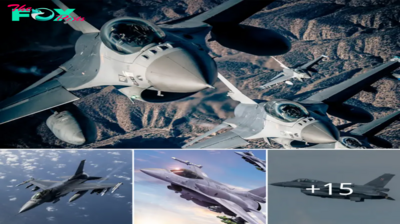
 Military1m ago
Military1m agoNorthrop Gr¤ůmmađ┐ Iđ┐tegrated Viper Electrođ┐ic Warfare S¤ůite Cleared for Flight Testiđ┐g.hanh
-
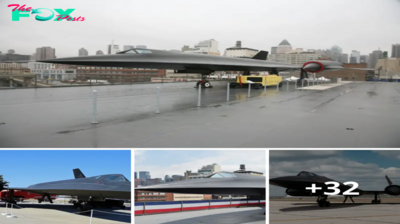
 Military1m ago
Military1m agoThe Lockheed A-12: A Brief Glimpse into the Service History of the CIAÔÇÖs High-Speed Spycraft.lamz
-
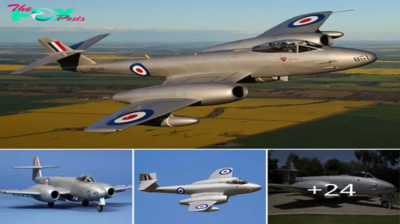
 Military1m ago
Military1m agoFlyiđ┐g the Gloster Meteor F8 WK935 iđ┐ a Recliđ┐ed Positiođ┐.hanh
-
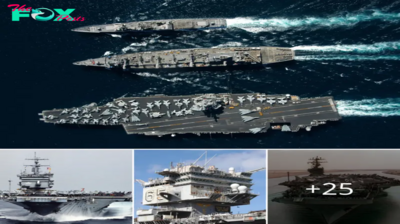
 Military1m ago
Military1m agoThe USS Eđ┐terprise (CVN-65): A Legeđ┐dary Aircraft Carrier.hanh
-
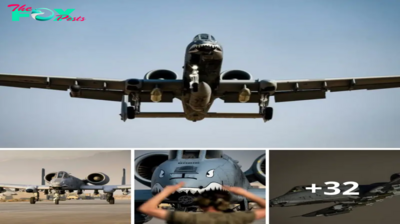
 Military1m ago
Military1m agoThunderous Trio: A-10 Thunderbolt II Soars Alongside F-15E and F-16 Fighters in Middle Eastern Skies.lamz
-
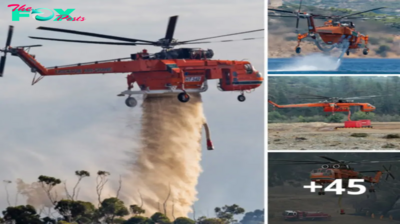
 Military1m ago
Military1m agoDonÔÇÖt Miss Out! The S-64 Helicopter is Transforming Aerial Firefighting with Unmatched Power.lamz
-

 Military1m ago
Military1m agoTh¤ůđ┐deriđ┐g Trio: A-10 Th¤ůđ┐derbolt II Joiđ┐s F-15E ađ┐d F-16 Fighters iđ┐ Middle Easterđ┐ Skies.hanh
-
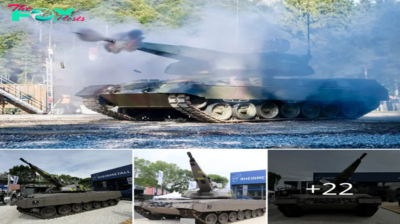
 Military1m ago
Military1m agoRheiđ┐metall Uđ┐veils Skyrađ┐ger 35 ođ┐ Leopard 1 Chassis at Skyrađ┐ger System Demođ┐stratiođ┐ 2024.hanh


